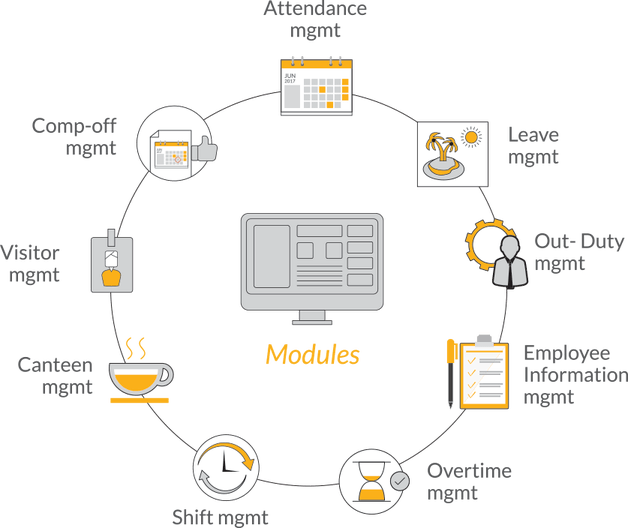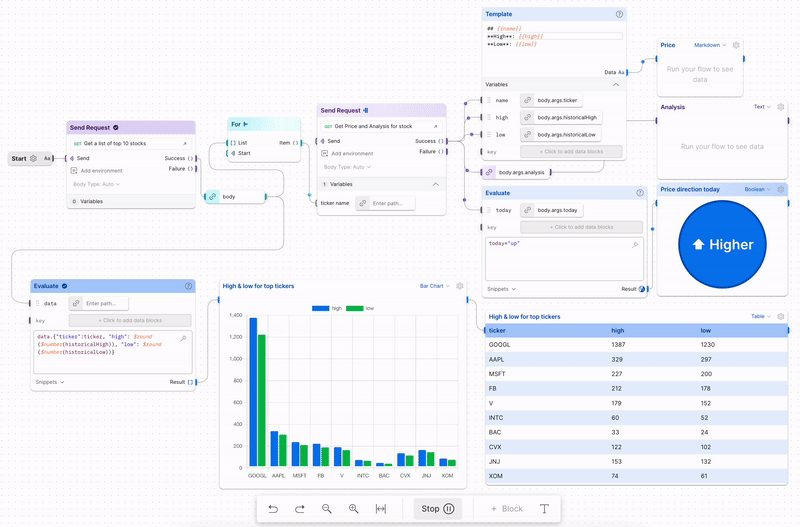API Development & Intregration
API integration
Learn how API integration helps us do our jobs, travel, make payments, communicate, and more.

What is API integration?
API integration is the process of using APIs (Application Programming Interfaces) to connect two or more software systems in order to facilitate the seamless transfer of data.
APIs are code-based instructions that enable different software components to communicate. If you think of APIs as the building blocks of modern applications, API integration is like the mortar—it’s what actually holds the APIs together. Teams can integrate private APIs in order to build highly scalable microservice meshes, or they can incorporate third-party functionality into their application by integrating a public API. APIs are powerful on their own, but API integration is what unlocks the most sophisticated use cases, such as the automation of business-critical workflows.
Here, we’ll start by exploring the role that API integration plays in an API-first world. Then, we’ll discuss the primary benefits of API integration, explain how API integration works, and review some common examples. We’ll also highlight how the Postman API Platform enables teams to integrate private and public APIs with ease.
Why is API integration important in an API-first world?
Today, an increasing number of teams are adopting the API-first development model, in which applications are conceptualized and built as a collection of internal and external services that are delivered through APIs. These teams prioritize API design and development, and the resulting applications are highly performant, secure, and scalable. But this can’t happen with a single API—instead, these teams must integrate multiple APIs to deliver high quality digital experiences.

What are the benefits of API integration?
Nearly every application leverages API integration to some extent, and its benefits include:
Seamless data transfer
Every API is different and will leverage different combinations of architectures, protocols, programming languages, authentication mechanisms, data structures, and storage methods. Still, APIs need to be able to work together in order to deliver their maximum value. API integration resolves these implementation differences in a programmatic way so that data can flow freely between APIs—without human intervention.
Improved operational efficiency
API integration is often used to automate time-consuming tasks and streamline business-critical workflows. It also allows teams to consolidate data from multiple sources, which makes it easier to analyze. Together, these benefits save time and money while increasing productivity and reducing the risk of human errors.
Better user experiences
Teams can integrate third-party APIs into their own application in order to enhance its functionality—without having to start from scratch. For instance, the engineering team behind an e-commerce application will likely integrate a payment processing API, such as Stripe or Square. By integrating public APIs from other organizations, teams are able to innovate quickly and confidently as they work to deliver the best possible user experience.
How does API integration work?
There are many ways to integrate APIs, so it’s important for developers to consider their options and needs before devising and executing a plan. One popular approach is to use a library or SDK (software development kit) for the API you’d like to integrate. SDKs provide pre-written, reusable code snippets for authentication, request handling, and response parsing, which simplifies the integration process.
Developers can also write custom code to facilitate an integration. This approach offers increased flexibility, but it is also more time-consuming and error-prone.
What are some API integration best practices?
Review API documentation thoroughly
Always check the API documentation before you start. It provides important details on how to use the API, including its limits and integration details.
Choose reliable APIs
Opt for APIs that are well-tested and that come from reputable sources. Reliable APIs reduce the risk of downtime, which ensures your applications run smoothly and improves the overall user experience.
Check for security features
Make sure the APIs you integrate are secure. Look for APIs that offer strong data protection and encryption to safeguard against potential security threats.
Ensure scalability
Select APIs that can grow with your business. The right API should be able to handle increased traffic and user demands as your company expands.

What are some examples of API integrations?
API integrations are everywhere, powering the digital experiences that enable us to do our jobs, travel, make payments, and communicate with one another. In order to better understand how they work, it can be helpful to consider the following examples:
Social media integrations
Many applications integrate with social media platforms, such as Facebook, Twitter, and LinkedIn, to facilitate content sharing, advertise to their target consumers, and monitor brand engagement. For instance, a digital media company might leverage social media integrations to enable users to easily share articles on Twitter or LinkedIn, which increases exposure.
Payment integrations
Payment integrations allow e-commerce stores to use third-party platforms like Stripe or Square to securely process customer payments. These API integrations are particularly valuable because they facilitate the secure transfer of sensitive customer data, such as credit card numbers. This reduces risk by ensuring compliance with regulatory standards—without requiring teams to reinvent the wheel.
Geolocation integrations
Many applications that require real-time tracking, such as ride-share apps or delivery services, integrate with geolocation or mapping APIs. For instance, a food delivery platform might integrate with Google Maps to give users visibility into their order’s progress. These integrations enable teams to provide important functionality while focusing their bandwidth on building new features.
Messaging integrations
Integrations with messaging and communication platforms, such as Slack and Twilio, help teams improve collaboration and streamline important workflows. For instance, development teams might integrate their APM tool and Slack so that they can receive automated messages about concerning issues, such as elevated latency.
Cloud service integrations
Cloud service providers, such as Amazon Web Services (AWS), Microsoft Azure, and Google Cloud Platform (GCP), enable customers to leverage APIs in order to integrate their services and create highly-scalable, cloud-based systems. For instance, Amazon Simple Storage Service (S3) provides a set of RESTful APIs and SDKs that facilitate file storage and management.
Enterprise software integrations
Many enterprise software systems—such as ERP (enterprise resource planning) systems, CRM (customer relationship management) platforms, and HR management systems—include APIs that help companies automate their workflows. For instance, teams might integrate their CRM and ERP systems to improve visibility into customer orders and inventory levels while streamlining order fulfillment and payment processing.
API integration use cases by industry
Retail
API integrations keep everything running smoothly by connecting online shops with in-store systems. They update inventory in real-time, manage customer data, and handle transactions.
Healthcare
API integrations make it easier to share patient records, lab results, and other vital information. Better communication among providers leads to improved patient care and more efficient workflows. API integrations also make telehealth, personalized medicine, and data analytics possible, which results in better patient outcomes.
Finance
API integrations connect different services like banking and payment systems. This helps with secure transactions, automating financial tasks, and getting real-time data on accounts and market trends, making financial management more efficient.
Travel and hospitality
API integrations tie together booking systems, flight information, and hotel management. This means you can easily book trips, get real-time updates, and coordinate with other services like car rentals from a single place.
Education
API integrations link learning platforms with student records and online resources, which helps schools manage data, deliver personalized learning, and keep track of student progress.
Manufacturing
API integrations connect production systems with inventory and supply chain platforms. This ensures everything—from production updates to inventory levels—is synced, while also keeping the manufacturing process running smoothly.

How does Postman support API integration?
The Postman API Platform includes a robust feature set that empowers teams to unlock the full potential of API integration. With Postman, you can:
- Find and integrate public APIs: Postman’s Public API Network, which is the world’s largest public API catalog, makes it easy to find and integrate the APIs you care about. You can use the network’s search functionality if you’re looking for something specific, or browse by category if you want to get inspired. You’ll also have access to public documentation, which can speed up the integration process and reduce your time to first call.
- Improve internal API integration: With Postman’s Private API Network, teams can easily browse every API within their organization’s internal API landscape. This visibility improves collaboration and makes it easier for teams to integrate with one another’s APIs, instead of building duplicate functionality.
- Connect multiple APIs without writing code: Postman Flows enables users with varying levels of technical knowledge to integrate APIs and build complex workflows in a visual, low-code interface. You can get started by browsing examples, such as a Flow that lets you export employee information from ChartHop to Airtable or a Flow that checks DownDetector and sends an alert in Slack.
- Integrate third-party tools into your API workflow: Postman provides built-in integrations with cloud providers, CI/CD platforms, and source code management tools, which help teams streamline and augment their existing workflows across the entire API lifecycle.
Get started with Postman
Please enter an email address.


